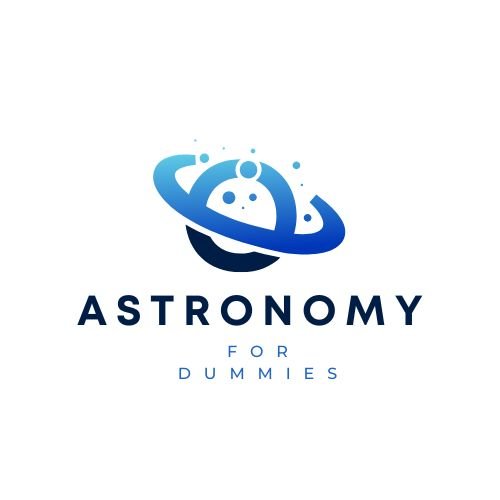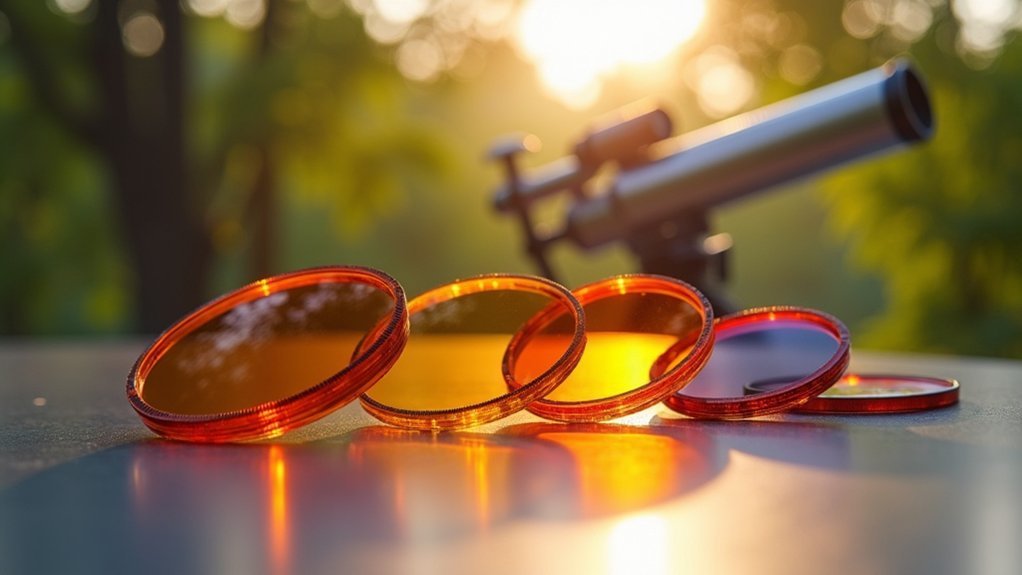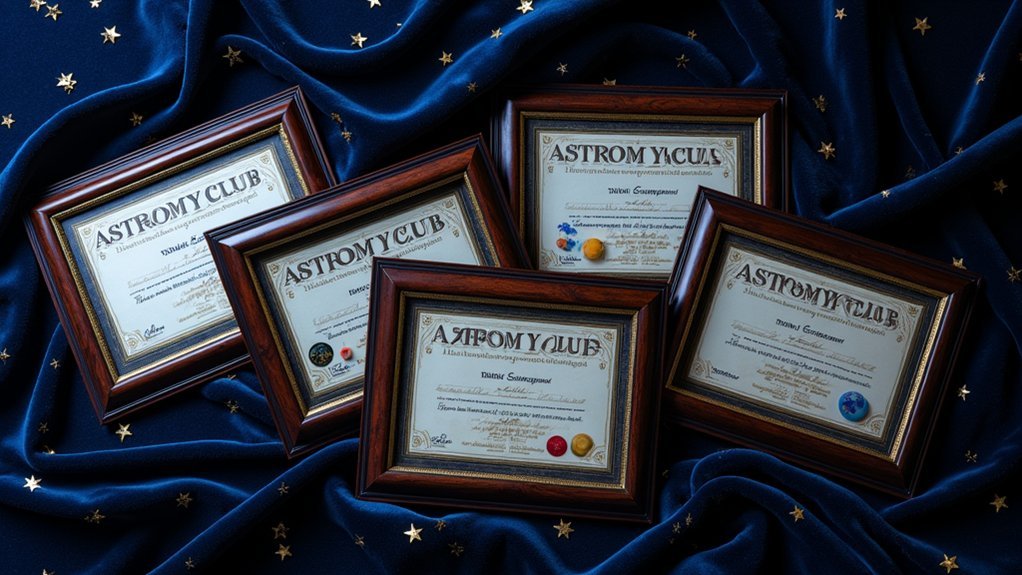When selecting solar filters for telescopes, verify they meet ISO 12312-2 standards, which guarantee protection from harmful solar radiation. Look for certification documentation from trusted manufacturers like Thousand Oaks Optical and Baader. Safe filters limit transmittance to 0.0032% and must be free of defects larger than 200 μm. Only purchase from reputable suppliers to avoid counterfeits. The right safety-certified filter will protect your vision while revealing the sun’s fascinating details.
10 Best Solar Filters: Safety Certifications For Telescopes

When observing the Sun with your telescope, safety must be your top priority as improper equipment can cause permanent eye damage or blindness. Always use solar filters for telescopes that comply with the ISO 12312-2 standard, which guarantees protection against harmful solar radiation.
Legitimate safe solar filters must maintain specific luminous transmittance levels across ultraviolet, visible, and infrared wavelengths. They should be defect-free, with metal-coated filters allowing no more than one pinhole under 200 μm in size.
Safe solar filters require precise transmittance levels and must be virtually defect-free to protect your eyes during observation.
When purchasing filters for solar viewing, verify they’re securely mounted to prevent accidental dislodgment. Check for proper labeling including manufacturer information and eye safety warnings.
Only trust products tested by accredited laboratories—many online options lack proper certifications. The combination of safety standards and optical quality guarantees your solar observations remain both enjoyable and safe.
Understanding ISO 12312-2 Standards for Solar Observation
ISO 12312-2:2015 certification guarantees your solar telescope filters meet rigorous safety standards for direct sun observation.
These standards require strict transmittance limits for UVA and UVB radiation, defect-free filters, secure mounting systems, and thorough labeling with safety warnings.
When you’re shopping for solar filters, you’ll notice that certified products undergo extensive testing for optical qualities and physical durability to protect your vision during solar events.
ISO Certification Requirements
Understanding proper safety certification stands as the cornerstone of responsible solar observation equipment selection.
When purchasing solar filters, you must verify they’re ISO certified to the 12312-2:2015 standard, which protects against serious eye damage during solar observation.
Legitimate certification guarantees your filters meet strict transmittance limits—between shade 12 and shade 15—for ultraviolet, visible, and infrared radiation.
The standard permits only minimal defects: no more than one pinhole under 200 μm in specified zones.
Proper certification requires testing by accredited laboratories that verify filters are securely mounted and correctly labeled with manufacturer information and safety warnings.
Don’t compromise on these requirements—uncertified filters may fail to protect your vision during solar events, resulting in permanent eye damage that occurs without warning.
Testing Process Overview
The rigorous testing process behind ISO 12312-2:2015 certification reveals why proper solar filters matter for your safety. When manufacturers submit their solar filters for testing, labs evaluate several critical factors to guarantee your eyes remain protected during direct sunlight observation.
Each filter undergoes strict transmittance testing across ultraviolet, visible, and infrared wavelengths, with requirements corresponding to shade 12 or 15 welding filters. Inspectors check for visual defects, allowing only one pinhole no larger than 200 μm in designated zones.
The mounting mechanisms must also demonstrate they’ll securely hold filters in place during normal handling.
Compliant filters must include proper labeling with manufacturer details, usage instructions, and eye safety warnings. This thorough testing process guarantees that when you purchase ISO-certified filters, you’re getting reliable protection for your vision.
The Importance of CE Certification in Solar Filter Selection

Safety marks on solar filters aren’t just bureaucratic symbols—they’re your eyes’ best defense against permanent damage.
When selecting solar filters for your telescope, you should prioritize those with CE certification, which confirms compliance with European safety standards specifically designed for personal protective equipment.
CE-certified solar filters have undergone rigorous testing to verify they provide adequate protection against harmful solar radiation during observation. This certification works alongside ISO standards to guarantee thorough safety and quality.
Together, they create a reliable framework for consumer protection.
You’ll gain more confidence in your equipment when choosing CE-certified products, knowing they meet established safety guidelines and manufacturing practices.
Don’t compromise on certification—your vision depends on proper protection during solar viewing.
Thousand Oaks Optical: Safety Features and Certification Details
When shopping for Thousand Oaks Optical solar filters, you’ll find they meet ISO 12312-2 certification standards, securing protection from harmful solar radiation during observation.
The filters’ high optical density ratings guarantee sharp, clear views of solar features while blocking dangerous wavelengths that could damage your eyes.
Their rigorous material durability testing results in filters that maintain safety standards over time, even with regular use and proper storage.
ISO Certification Standards
Because your eyes require absolute protection during solar observation, Thousand Oaks Optical guarantees all their filters meet the rigorous ISO 12312-2 standard for direct solar viewing products. When you’re shopping for Solar Filters for Optics, this certification guarantees compliance with luminous transmittance limits, protecting your eyes from harmful radiation.
| ISO Requirement | Thousand Oaks Implementation | Safety Benefit |
|---|---|---|
| Defect-Free Material | Quality control inspections | Prevents vision impairment |
| Proper Labeling | Clear usage instructions | Guarantees correct application |
| Laboratory Testing | Verified by accredited labs | Confirms radiation protection |
The AAS Solar Eclipse Task Force recommends only using certified filters like these. Every Thousand Oaks Optical filter undergoes strict testing before reaching their safety page, giving you confidence that your solar viewing experience will be both spectacular and safe.
Optical Density Ratings
Beyond ISO certification requirements, understanding the optical density (OD) ratings of Thousand Oaks filters reveals why they’re trusted worldwide.
These solar filters meet stringent ISO 12312-2 safety standards by effectively blocking harmful ultraviolet and infrared radiation while allowing only safe levels of visible light to pass through.
The precise optical density of Thousand Oaks Optical filters guarantees you’ll observe the sun safely without risking eye damage.
During your viewing experience, you’ll notice these filters provide remarkably uniform and clear solar images. This clarity isn’t just about aesthetics—it’s a direct result of the rigorous testing each filter undergoes to eliminate vision-impairing defects like bubbles and scratches.
When you choose Thousand Oaks filters, you’re getting scientifically verified protection that optimizes both safety standards and observational quality.
Material Durability Testing
The durability of Thousand Oaks Optical solar filters represents a critical safety feature that sets them apart from competitors. Each filter undergoes rigorous durability testing to guarantee it withstands prolonged sun exposure without degrading. This extensive testing is essential for maintaining eye safety during solar observations.
| Testing Parameter | Standard | Result |
|---|---|---|
| Material Quality | ISO 12312-2 | Meets international safety standard |
| Defect Inspection | <200 μm in 5mm zone | Guarantees ideal viewing safety |
| Attachment Security | Dislodgment testing | Prevents accidental removal |
Thousand Oaks Optical’s commitment to the ISO 12312-2 safety standard is evident in their meticulous quality control process. You’ll find detailed safety labeling with each filter, providing clear usage instructions and warnings. This attention to durability testing protects your vision while delivering exceptional viewing experiences.
Baader AstroSolar Film: Verification of Safety Credentials
When considering solar observation equipment, safety must always be your top priority, which is why Baader AstroSolar Film’s ISO 12312-2 certification stands out as an essential credential.
This ISO-certified filter guarantees your eyes remain protected while delivering exceptional optical quality for safe solar viewing.
You’ll appreciate how this film reveals impressive solar details, including sunspots and flares, without compromising safety. It’s designed to work with various telescope models and can be customized to fit different apertures securely.
Before each solar observation session, inspect your Baader AstroSolar Film carefully for any pinholes or tears.
This maintenance step is important, as even minor damage could compromise the filter’s protective properties.
With proper care, you’ll enjoy years of spectacular solar viewing with complete peace of mind.
Full Aperture vs. Eyepiece Filters: Safety Considerations

Safety standards exist for all solar observation equipment, but understanding the fundamental differences between filter types could literally save your eyesight.
Full aperture filters are the safest option for solar viewing because they block harmful rays before they enter your telescope. They must be ISO certified and securely attached to prevent accidents during observation.
Never use eyepiece filters that thread into the eyepiece—discard these immediately. They can crack from heat buildup, causing catastrophic eye injury if they fail while you’re looking through them.
The sole exception is the Herschel wedge, the only safe eyepiece filter for refractor telescopes. However, it’s considerably more expensive than full aperture alternatives.
For most astronomers, properly installed full aperture filters remain the best balance of safety considerations and affordability.
Material Quality: Testing Standards for Glass and Film Filters
Understanding the rigorous testing standards behind solar filter materials guarantees you’re investing in truly safe observation equipment. The ISO 12312-2 standard establishes strict material quality requirements for both glass filters and metal-coated film variants.
| Filter Type | Transmittance Limit | Allowed Defects |
|---|---|---|
| Glass | 0.0032% maximum | No scratches |
| Metal Film | 0.0032% maximum | One pinhole (<200 μm) |
| All Types | Securely mounted | No bubbles |
When shopping for solar filters, always verify they meet these ISO standard specifications. Manufacturers must provide thorough labeling with usage instructions and eye safety warnings. The strict transmittance limits (less than 0.0032%) guarantee dangerous radiation doesn’t reach your eyes while observing the sun, making proper material quality literally a matter of protecting your vision.
Major Manufacturers and Their Certification Processes

When choosing a solar filter, you’ll notice trusted manufacturers like Thousand Oaks Optical and Baader Planetarium follow different certification paths while meeting the essential ISO 12312-2 standard.
While some companies rely on third-party laboratory testing to verify their filters’ safety, others supplement with rigorous in-house testing protocols that often exceed minimum requirements.
You can identify properly certified products by checking for complete labeling that includes test dates, manufacturer details, and specific usage instructions—documentation that legitimate manufacturers proudly display.
Certification Standards Comparison
Every reputable solar filter manufacturer must meet stringent safety standards before their products reach your telescope. Leading brands like Thousand Oaks Optical and Baader Planetarium adhere to ISO 12312-2 certification, which establishes critical transmittance limits across ultraviolet, visible, and infrared spectrums to prevent retinal damage during direct solar viewing.
The certification process isn’t optional—it’s essential. Manufacturers must submit their solar filters to accredited laboratories that verify compliance with ISO standards, testing material quality, mounting stability, and optical performance.
These labs provide detailed reports that manufacturers must maintain to prove compliance.
For your safety, only purchase filters from vendors on the American Astronomical Society‘s verified list. These suppliers have demonstrated their products meet or exceed all safety certifications, ensuring you can confidently observe the sun without risk.
In-House Testing Protocols
Beyond industry certifications, major manufacturers implement their own rigorous in-house testing protocols to confirm solar filter safety. Companies like Thousand Oaks Optical and Baader Planetarium don’t just rely on ISO 12312-2 compliance—they exceed these safety standards through additional quality controls.
Before products reach accredited laboratories for certification, manufacturers conduct preliminary assessments that examine transmittance levels to verify dangerous radiation won’t reach your eyes. They meticulously inspect each filter for defects like pinholes or scratches that could compromise eye safety during solar observation.
Documentation from these tests supplements the official certification process, creating a dual-verification system. This thorough approach means you’re getting solar filters that have passed not just the required international standards, but also the manufacturer’s own stringent quality benchmarks.
Identifying Counterfeit Solar Filters: Warning Signs
Protecting your vision during solar observation requires authentic, safety-certified filters, as counterfeit products can cause permanent eye damage.
Always verify the ISO certification label (ISO 12312-2) on your solar filters, which guarantees they meet safety standards for direct solar viewing.
Examine filters for vision-impairing defects like scratches, bubbles, or pinholes—genuine products are defect-free.
Purchase only from reputable suppliers with documented track records, as they’ll provide test reports from accredited labs. Counterfeit filters often appear on marketplace sites from unknown vendors.
Check that packaging includes thorough usage instructions and eye safety warnings.
Be wary of suspiciously low prices; proper solar filters cost more because they undergo rigorous testing to confirm compliance with safety standards.
Your vision is worth the investment in authentic protection.
Professional Testing Methods for Solar Filter Integrity

Having identified counterfeit filters, let’s examine how reputable manufacturers verify their products meet safety standards. Legitimate solar filters undergo rigorous testing according to ISO 12312-2, which establishes strict safety criteria for solar observation products.
| Testing Parameter | Requirement |
|---|---|
| Luminous transmittance | Meets specific thresholds to prevent retinal damage |
| Material defects | Maximum one pinhole (≤200 μm) per 5mm zone |
| Mounting security | Must remain attached during normal use |
| Visual quality | Free from vision-impairing defects |
You can’t simply trust manufacturers’ claims about compliance. Accredited laboratories must verify filter safety using specialized equipment that measures transmittance values. Quality control processes detect bubbles, scratches, and coating flaws that could compromise eye protection. When purchasing solar filters, always look for certification documentation proving completed professional testing.
Frequently Asked Questions
What Is ISO 12312-2 Certified for Solar Viewing?
ISO 12312-2 certification guarantees your solar viewer safely protects your eyes from harmful solar radiation. It verifies filters meet strict transmittance requirements, have minimal defects, and provide appropriate brightness levels for direct sun viewing.
What Certification Should Solar Eclipse Glasses Have?
You’ll need solar eclipse glasses with ISO 12312-2 certification. This international standard guarantees they’re safe for direct solar viewing by properly filtering harmful radiation. Don’t use glasses without this certification—your eye safety depends on it.
Are Telescope Solar Filters Safe?
Telescope solar filters are safe if they’re ISO 12312-2 certified and placed on the objective end. You’ll need to inspect them regularly for damage. Never use eyepiece filters, which can cause dangerous heat buildup and eye injury.
Is Celestron Safe?
Yes, Celestron is safe when you’re using their properly certified EclipSmart Solar Filters. Always inspect your filter before use and verify it’s ISO 12312-2 certified. Never use eyepiece filters for solar viewing.
In Summary
You’ve now equipped yourself with essential knowledge about solar filter certifications for safe telescope use. Always verify ISO 12312-2 compliance and CE certification before making your purchase. Don’t compromise on safety standards from trusted manufacturers like Thousand Oaks Optical and Baader. Remember to check for counterfeit warning signs and perform integrity tests. Your vision’s safety depends on these vital certifications when observing our magnificent sun.





Leave a Reply